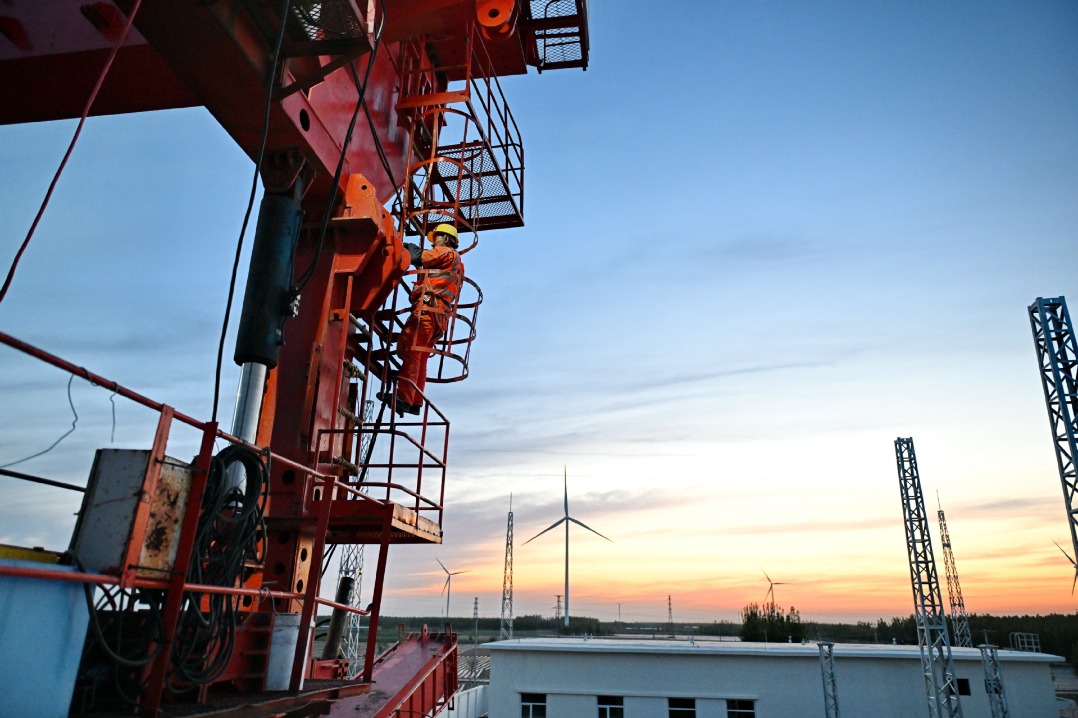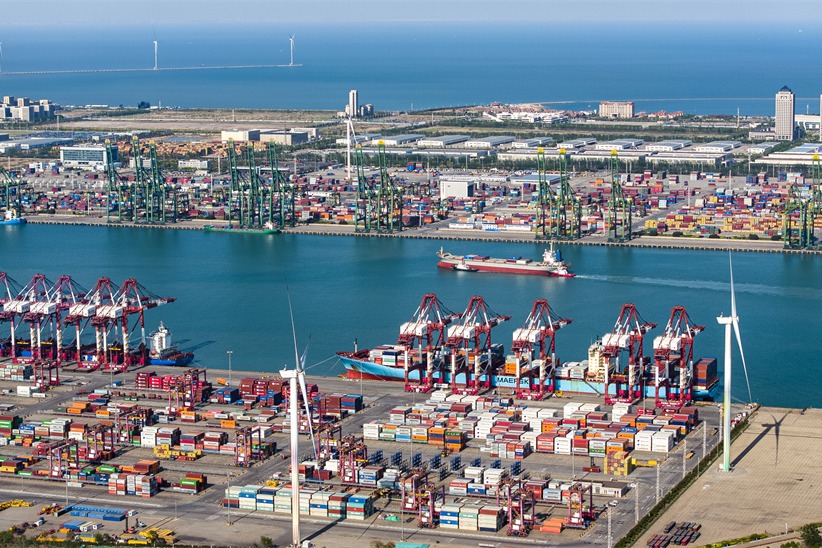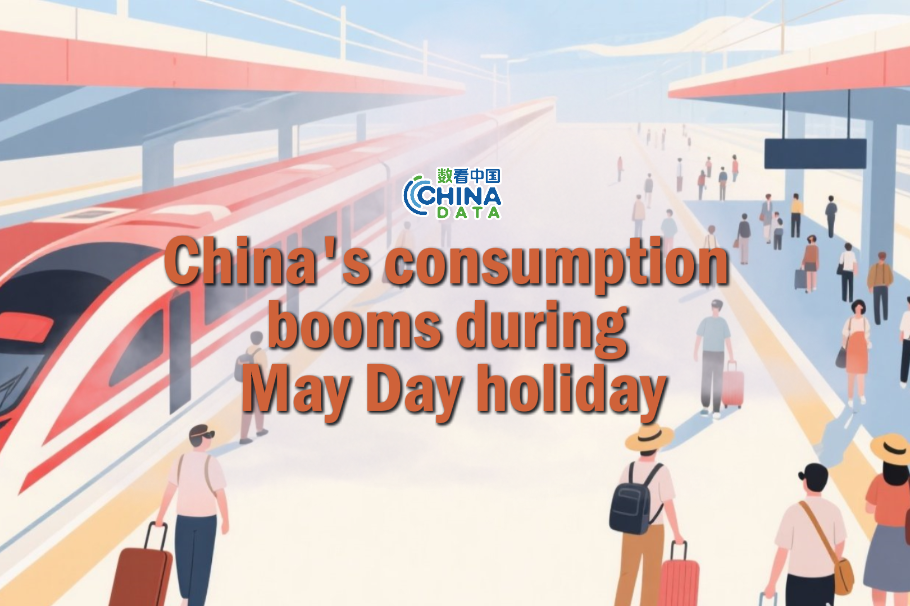China to boost economy by promoting consumption, opening-up


China is accelerating the establishment of a new development pattern where domestic and foreign markets can boost each other, with the domestic market as the mainstay, amid economic risks from home and abroad. By tapping the potential of domestic demand and pursuing high-standard opening-up, China's economy will not only pave the way for its own development, but also provide a strong impetus for global economic recovery and growth.
President Xi Jinping once said: "The Chinese economy is not a pond, but an ocean," pointing out that China's economy has strong resilience and broad prospects, which is attributable to the broad domestic consumer market and inclusive opening-up policy.
With a population exceeding 1.4 billion and a rapidly expanding middle-income group, China's domestic demand market is growing at an unprecedented pace, which offers vast business opportunities for foreign enterprises, particularly in sectors such as consumer electronics, automotives, luxury goods and services.
This trend is also key to China's economic stability in the face of complex international trade tensions. Through the implementation of a series of policies such as trade-in subsidies and the expansion of individual income tax exemptions, the government has effectively promoted household consumption and enhanced the endogenous momentum and stability of the economy.
From the production side, China's current industrial system stands unparalleled globally, covering every link from raw material extraction to final product manufacturing. The comprehensiveness of the industrial system not only boosts production efficiency, but also minimizes reliance on external resources, thereby strengthening economic autonomy and risk resilience.
Supported by national strategy and policies, China is accelerating technological innovation and industrial upgrading, especially in high-tech fields such as semiconductors, new energy and aerospace. All of these are beneficial for consolidating the advantages of existing industries and cultivating new economic growth points.
Furthermore, under the guidance of the theory of new quality productive forces, scientific and technological innovation has become the core driving force for China's economic development. These years, China has continued to increase investment in research and development, encouraging enterprises to innovate and promote the industrialization of scientific and technological achievements.
In cutting-edge science and technology fields such as artificial intelligence, 5G communications and quantum computing, China is gradually moving to the forefront of the world. The technological innovation in these fields not only improves efficiency and competitiveness of traditional industries, but also gives birth to new industries and business models. For example, the deep integration of the digital economy and the real economy has promoted the vigorous development of intelligent manufacturing and e-commerce, injecting a steady stream of vitality into China's economy.
By flexibly using fiscal, monetary and industrial policies, the government is able to respond quickly to economic fluctuations and maintain stable economic growth. In particular, timely and effective policy measures have played a key role in addressing major economic challenges, such as the global financial crisis and the pandemic.
At the same time, China's government has also paid attention to the combination of long-term and short-term goals, such as the implementation of the 13th and 14th five-year plans and the devising of the 15th Five-Year Plan (2026-30), which clarify the direction and focus of national development and ensured the sustained and healthy economic development.
To defend against economic risks, China has taken a series of measures including diversifying export markets, strengthening coordination with countries involved in the Belt and Road Initiative and promoting the construction of free trade zones, effectively alleviating pressure caused by trade frictions with the US since 2018.
Meanwhile, China has made contributions to maintaining the balance of world trade and successfully promoted the upgrading of domestic industries and consumption through conducting positive import policies such as hosting the China International Import Expo, showcasing the inclusiveness and openness of the country's market.
At present, China's financial system has become more robust and efficient after a series of reforms and adjustments. In particular, the steady progress of renminbi internationalization has not only enhanced China's position in global financial markets, but also helped to reduce exchange rate risks and enhance the stability of international trade and investment, making China's economy much more resilient and solid.
Through the implementation of the strategy of coordinated regional development, China has promoted economic cooperation and complementarity among different regions, forming a number of economic growth poles.
For example, the coordinated development of Beijing-Tianjin-Hebei, the integration of the Yangtze River Delta and the construction of the Guangdong-Hong Kong-Macao Greater Bay Area have not only optimized the allocation of resources, but also promoted the development of surrounding areas and enhanced the resilience and vitality of the entire national economy. This kind of interregional synergy has enabled China's economy to recover quickly and move forward in the face of challenges through the support and cooperation of other regions.
China is now focusing on the quality and efficiency of economic growth as the economy shifts from high-speed growth to high-quality development, which commands promoting green development, smart manufacturing and services to achieve harmonious economic, social and environmental development.
High-quality development also means paying attention to all-round development of the citizenry, which means to enhance the quality of people's quality of life by improving the level of public services such as education, medical care and culture, so that the fruits of reform and development can benefit all people more fairly.
Moving forward, China will also continue to adhere to open regionalism, deepen economic and trade cooperation with other countries, and promote the high-quality development of the Belt and Road Initiative so as to promote the prosperity and stability of the global economy. By actively participating in global economic governance and fostering the building of an open world economy, China is willing to work hand-in-hand with other countries to jointly address global challenges and achieve common development.
The views do not necessarily reflect those of China Daily.
The writer is a senior research fellow at the Chinese Academy of Macroeconomic Research and former director of the Market and Price Research Institute of the Chinese Academy of Macroeconomic Research.




































